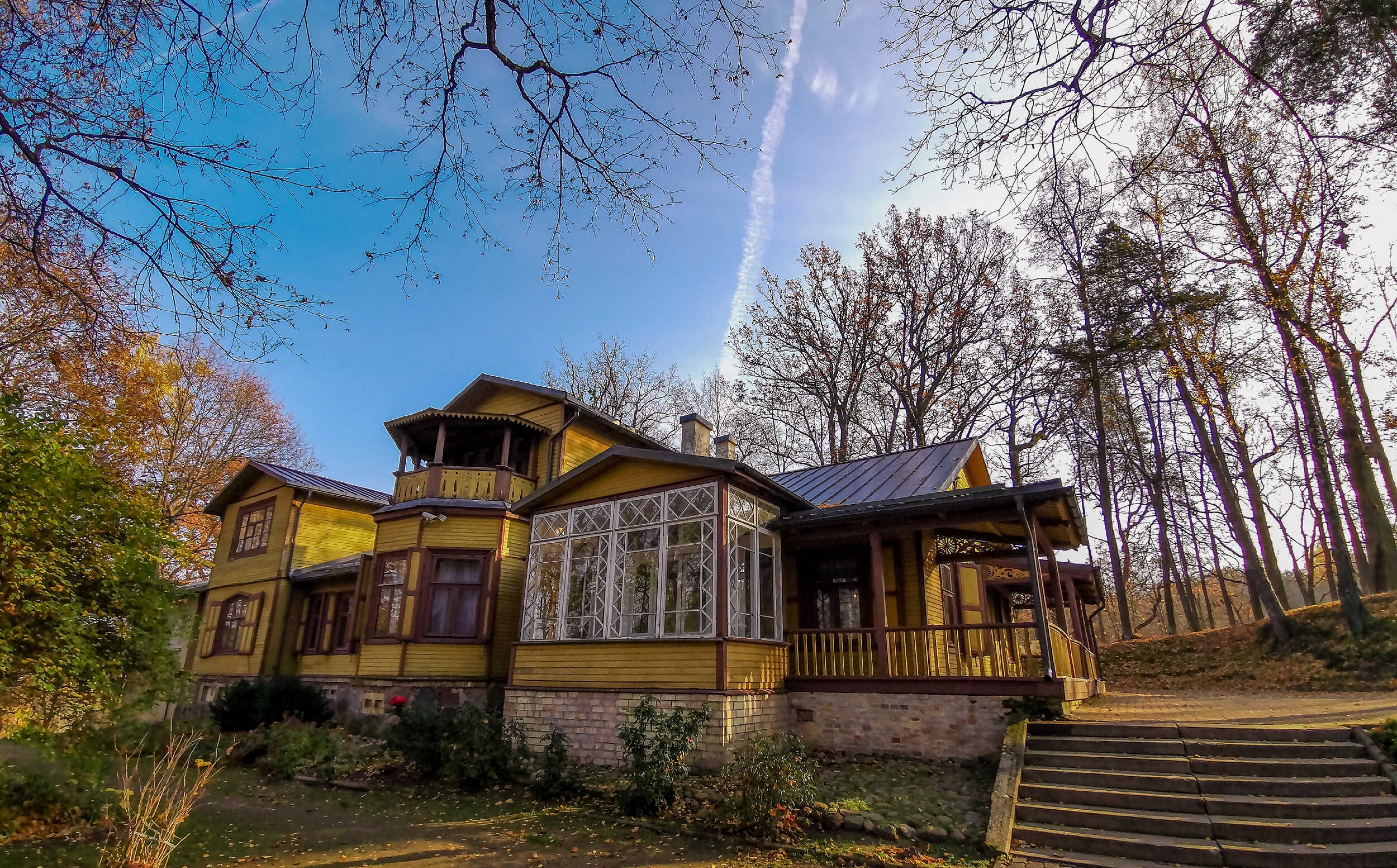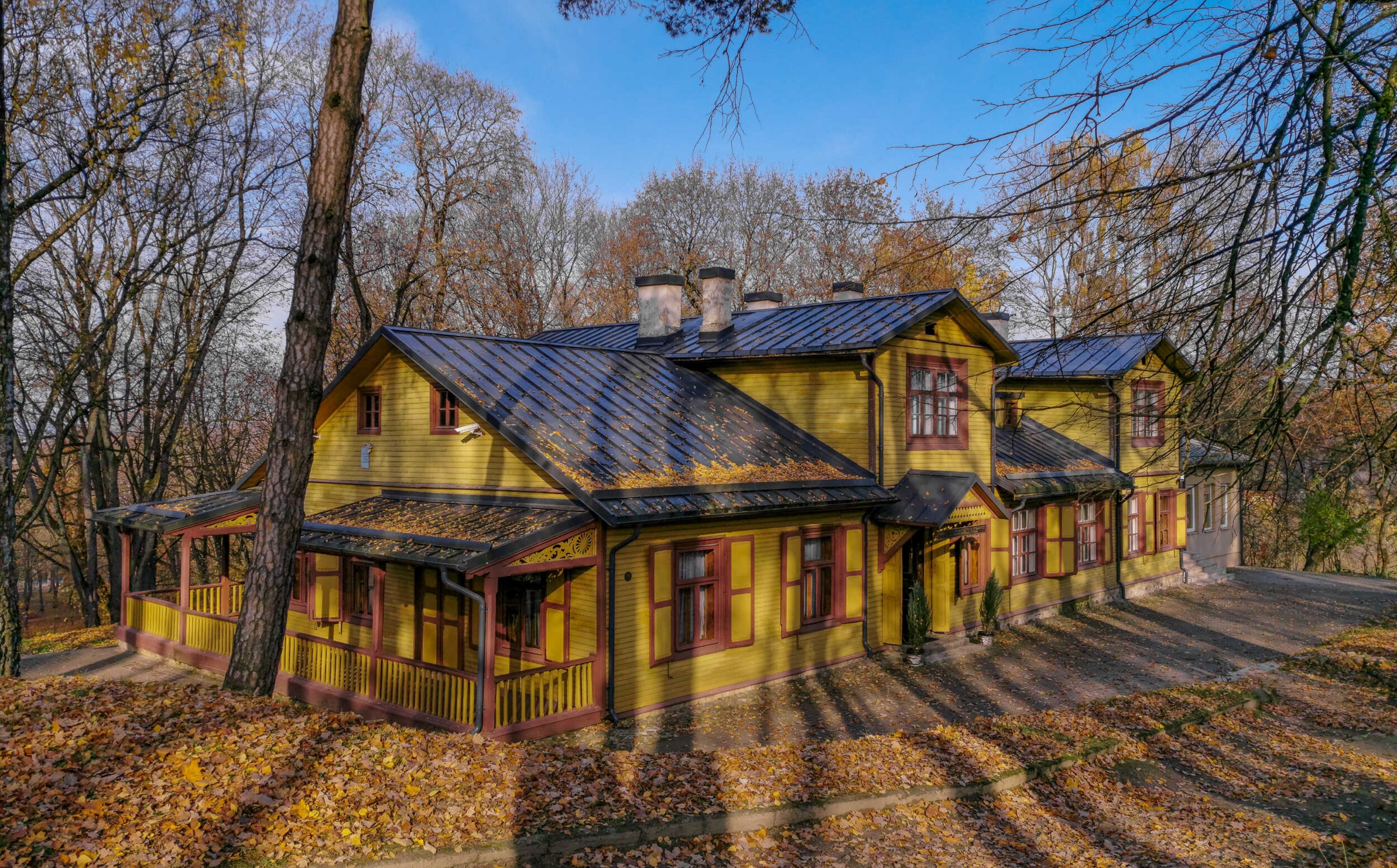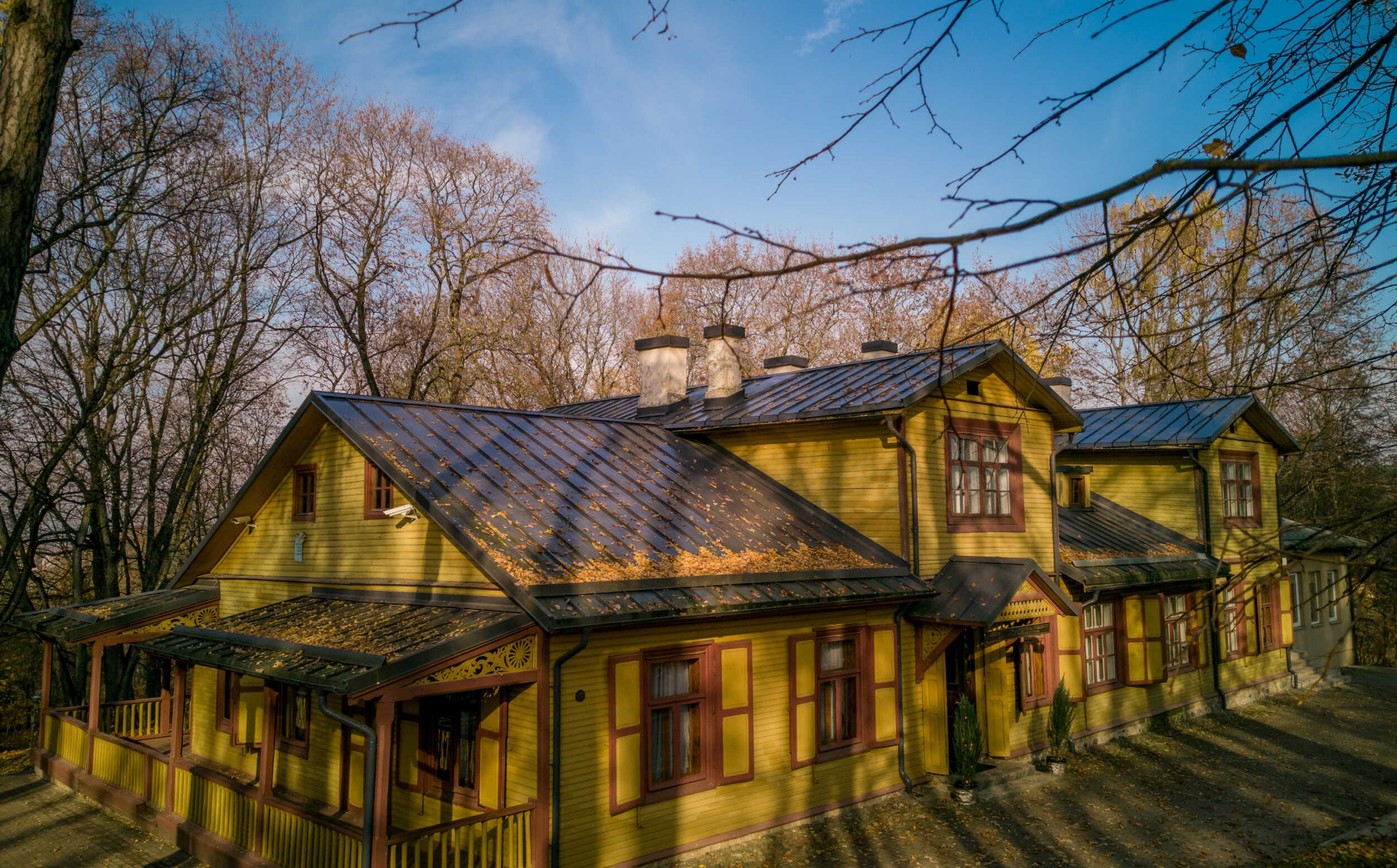In the 16th century, Markučiai belonged to the Great Dukes of Lithuania. Jogaila assigned a part of this territory to the parson of St. Martin’s Church. Alexander Jagiellon later gave Markučiai as a gift to his wife Elena, who built a summer palace here. After her death, Markučiai Manor went to the noble Kiszka family, and for almost two centuries the manor was ruled by the Chodkiewicz family. In the 19th century, the manor was bought by a doctor Ignas Godlevskis.
In 1867, a Russian railway engineer A. Melnikov became the owner of Markučiai Manor. In 1875, he gave the manor to his daughter Varvara as a dowry when she was marrying her first husband Vasily Moshkov.
Varvara’s second husband was Grigory, the younger son of the poet Alexander Pushkin. In 1899, they settled in Markučiai Manor, where they engaged in economic activities and recreation business. After her husband’s death, Varvara Pushkin made sure the poet’s relics are preserved and left the central building of the manor to the state ordering to establish a museum as her last will. The manor, that was damaged immensely during the German occupation, never recovered.
Literary museum
In 1948, the first literary museum of Alexander Pushkin in Lithuania was established at Markučiai Manor. The residential house of the manor, the park with ponds of the 18th century, family cemetery, St. Varvara’s Chapel and a monument to A. Pushkin have been preserved. The museum displays six authentically furnished rooms from the end of the 19th century. It exhibits furniture, photographs, household items and works of art. It regularly hosts exhibitions and events.


